Combating Air Pollution: 1st International Symposium on Aerosol Chemistry Held by NSYSU
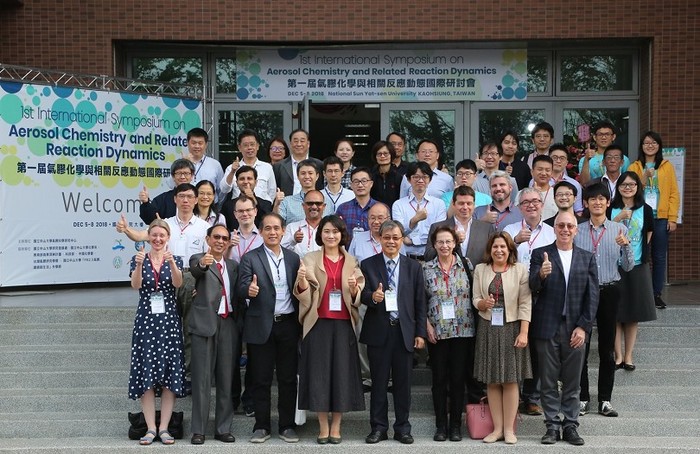
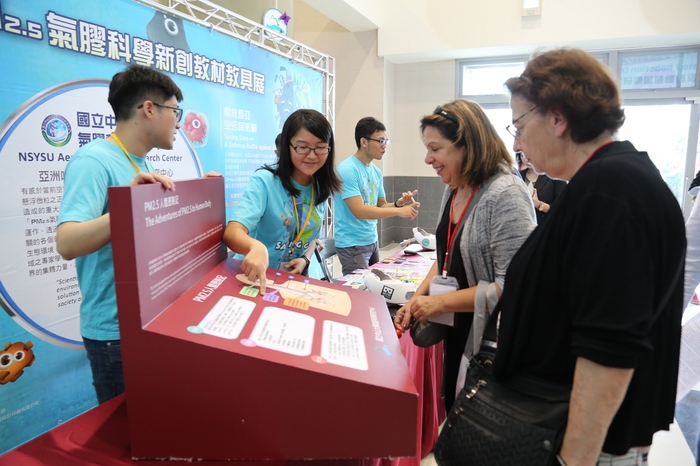
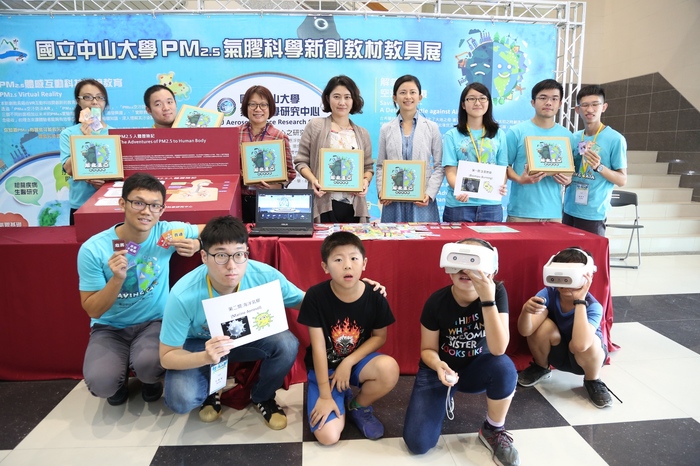
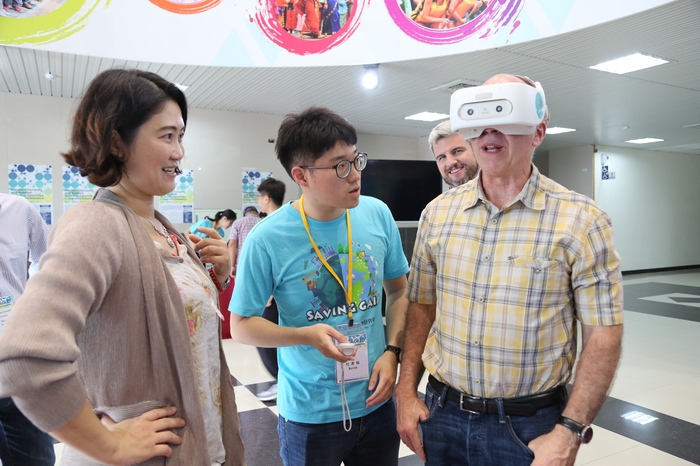
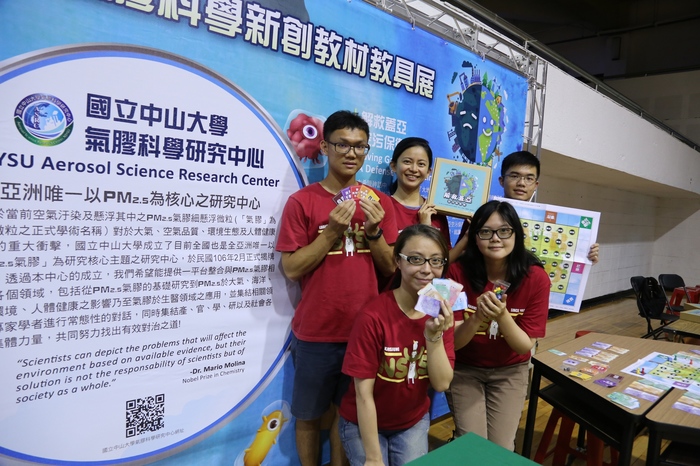
When the air pollution season arrives in Taiwan, high levels of fine particulate matter (PM2.5) are present in the air, posing a great threat to air quality and citizen health. In addition to measuring the PM2.5 concentration, it is crucial to understand how fine particles form and how they harm the human body. The 1st International Symposium on Aerosol Chemistry and Related Reaction Dynamics was held at National Sun Yat-sen University (NSYSU) from December 5. As the organizer, the Aerosol Science Research Center (ASRC) of NSYSU invited more than ten researchers and experts specialized in aerosol chemistry and molecular science from North America, Europe, and Asia to discuss the formation mechanism of PM2.5 aerosol and relevant chemistry topics for the first such symposium in Taiwan. Cutting-edge aerosol technologies and related reaction dynamics were also discussed in the symposium.
Chia-Chen Wang, director of the ASRC, noted that air pollution has become a significant global issue. According to statistics, the number of people who die prematurely because of exposure to air pollution is 6–7 million. Therefore, gathering scientists and researchers from all over the world to brainstorm and discuss countermeasures is a priority.
In addition to hosting international academic exchange targeting aerosol chemistry, the ASRC held a presentation for innovative PM2.5 teaching materials in conjunction with the international symposium. Director Wang stressed that even though aerosol science research is critical, disseminating knowledge regarding PM2.5 aerosol science and environmental conservation for raising environmental awareness and scientific literacy among the general public is a much more urgent matter—“Air Pollution is Everywhere: Environmental Education Cannot Wait!” The exhibition of innovative PM2.5 teaching materials outlined a set of somatosensory interactive teaching materials based on augmented reality (AR) and virtual reality (VR), with these materials taking half a year to design and develop. The teaching materials inform the general public about the various sources of PM2.5. In addition, “Saving Gaia: Defense Battle Against Air Pollution,” the first PM2.5 board game, was also developed. In this game, people can brainstorm solutions to air pollution through various scenarios and characters.
The ASRC employed somatosensory interactive technology to promote AR/VR education on PM2.5 aerosol science. The teaching content was divided into three levels. The AR/VR learning approach enables children and the general public to learn through play and have a greater understanding of PM2.5, “the invisible killer in the air,” as explained by Wang. The first level, the PM2.5 Hunting Ground, is an AR game to stimulate players’ learning interest. The second level, the PM2.5 Laboratory, employs VR technology to create cute monsters based on the shapes of eight potential PM2.5 pollutants (i.e., factory emissions, vehicle exhaust, ship exhaust, cooking fumes, tobacco smoke, dust from construction sites or ground surfaces, marine aerosols, and biomass burning) observed under transmission electron microscopy. These monsters introduce the types, causes, and potential harm of each pollutant type. The third level, the PM2.5 Knowledge Tower, focuses on concept assessment; a VR game is employed to test learners on their comprehension of air pollution knowledge.
Associate Professor Paichi-Pat Shein, chief of the environmental education promotion division of the ASRC, developed and designed the PM2.5 board game “Saving Gaia: Defense Battle against Air Pollution” with her students. Representing the Earth, the name Gaia is derived from Greek mythology meaning mother earth. The greed and desire of humans have generated the air pollution devil, putting Gaia in danger. Players may decide whether Gaia can be successfully rescued or will be defeated by the air pollution devil, occupying the Earth. Associate Professor Shein explained that the board game is based on instructional design and has three characters, namely the air pollution devil, the government, and citizens. The board game aims to educate learners on the following: the color codes of air quality index levels, external factors of air pollution and potential pollutants, consequences of air pollution events, government’s policies on air pollution control, measures citizens should take in the face of severe air pollution, and the fact that citizens may even create air pollution in their daily lives and deteriorate air quality.
Chia-Chen Wang, director of the ASRC, noted that air pollution has become a significant global issue. According to statistics, the number of people who die prematurely because of exposure to air pollution is 6–7 million. Therefore, gathering scientists and researchers from all over the world to brainstorm and discuss countermeasures is a priority.
In addition to hosting international academic exchange targeting aerosol chemistry, the ASRC held a presentation for innovative PM2.5 teaching materials in conjunction with the international symposium. Director Wang stressed that even though aerosol science research is critical, disseminating knowledge regarding PM2.5 aerosol science and environmental conservation for raising environmental awareness and scientific literacy among the general public is a much more urgent matter—“Air Pollution is Everywhere: Environmental Education Cannot Wait!” The exhibition of innovative PM2.5 teaching materials outlined a set of somatosensory interactive teaching materials based on augmented reality (AR) and virtual reality (VR), with these materials taking half a year to design and develop. The teaching materials inform the general public about the various sources of PM2.5. In addition, “Saving Gaia: Defense Battle Against Air Pollution,” the first PM2.5 board game, was also developed. In this game, people can brainstorm solutions to air pollution through various scenarios and characters.
The ASRC employed somatosensory interactive technology to promote AR/VR education on PM2.5 aerosol science. The teaching content was divided into three levels. The AR/VR learning approach enables children and the general public to learn through play and have a greater understanding of PM2.5, “the invisible killer in the air,” as explained by Wang. The first level, the PM2.5 Hunting Ground, is an AR game to stimulate players’ learning interest. The second level, the PM2.5 Laboratory, employs VR technology to create cute monsters based on the shapes of eight potential PM2.5 pollutants (i.e., factory emissions, vehicle exhaust, ship exhaust, cooking fumes, tobacco smoke, dust from construction sites or ground surfaces, marine aerosols, and biomass burning) observed under transmission electron microscopy. These monsters introduce the types, causes, and potential harm of each pollutant type. The third level, the PM2.5 Knowledge Tower, focuses on concept assessment; a VR game is employed to test learners on their comprehension of air pollution knowledge.
Associate Professor Paichi-Pat Shein, chief of the environmental education promotion division of the ASRC, developed and designed the PM2.5 board game “Saving Gaia: Defense Battle against Air Pollution” with her students. Representing the Earth, the name Gaia is derived from Greek mythology meaning mother earth. The greed and desire of humans have generated the air pollution devil, putting Gaia in danger. Players may decide whether Gaia can be successfully rescued or will be defeated by the air pollution devil, occupying the Earth. Associate Professor Shein explained that the board game is based on instructional design and has three characters, namely the air pollution devil, the government, and citizens. The board game aims to educate learners on the following: the color codes of air quality index levels, external factors of air pollution and potential pollutants, consequences of air pollution events, government’s policies on air pollution control, measures citizens should take in the face of severe air pollution, and the fact that citizens may even create air pollution in their daily lives and deteriorate air quality.
Click Num:
Share
